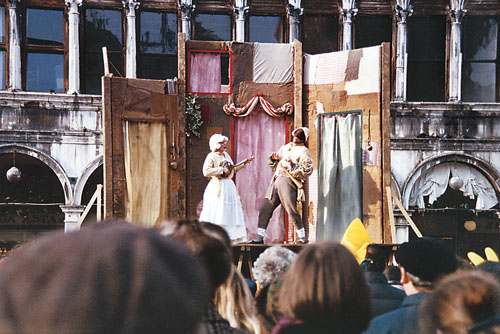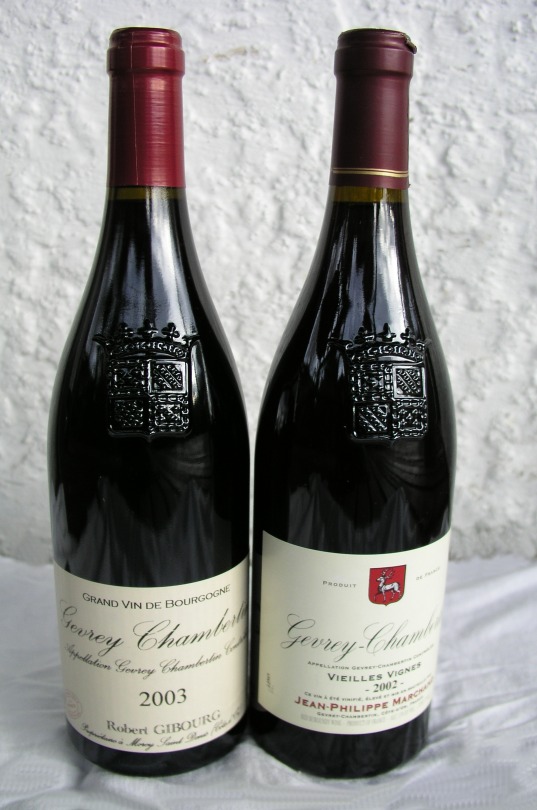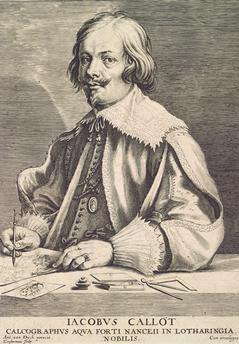|
Mezzetin
Mezzetino, also Mezzettino, (Pron. ''met-zeh-TEE-no'') is a character from the ''commedia dell'arte'' and is considered by Duchartre to be a variant on the stock character Brighella. His name means "Half-Measure (of liquor)" in Medieval Italian, and he is sometimes called in French and English plays "Mezzetin". He first appeared in the 16th century. Mezzetino is an adept schemer and trouble-maker, willing to commit acts of violence if necessary, but on the whole a little calmer than his brother Brighella, and much more gentle and cultivated, especially in his later life. He is often very musically inclined, and can sing and dance with skill. His character can vary greatly: he can be a loyal servant or simply scheming for his master's downfall; he can be a deceitful husband or be deceived by his wife. He also seems to be rather more interested in the ladies than is Brighella, often coming over as rather creepy in his efforts to flirt. His costume has gone through similar variati ... [...More Info...] [...Related Items...] OR: [Wikipedia] [Google] [Baidu] |
Brighella
Brighella (in Bergamasque dialect: ''Brighèla'') is a comic, masked character from the Italian theatre style Commedia dell'arte. His early costume consisted of loosely fitting, white smock and pants with green trim and was often equipped with a ' (also ' or ', depending on region) or slap stick, or else with a wooden sword. Later he took to wearing a sort of livery with a matching cape. He wore a greenish half-mask (traditionally olive-green) displaying a look of preternatural lust and greed. It is distinguished by a hook nose and thick lips, along with a thick twirled mustache to give him an offensive characteristic. He evolved out of the general Zanni, as evidenced by his costume, and came into his own around the start of the 16th century. He is loosely categorized as one of the ''zanni'' or servant characters though he often was portrayed as a member of the middle class such as a tavern owner: his character could be adapted to whatever the needs to the scenario might be, j ... [...More Info...] [...Related Items...] OR: [Wikipedia] [Google] [Baidu] |
Zanni
Zanni (), Zani or Zane is a character type of commedia dell'arte best known as an astute servant and a trickster. The Zanni comes from the countryside and is known to be a "dispossessed immigrant worker".Rudlin, John. ''Commedia dell'arte: An Actors Handbook''. London: Routledge, 1994. 67. Print."Immigrant" in Italy at the time of the city-states did not mean someone from outside of Italy but rather someone from outside the city, an itinerant worker. Through time, the Zanni grew to be a popular figure who was first seen in ''commedia'' as early as the 14th century. The English word ''zany'' derives from this person. The longer the nose on the characters mask the more foolish the character. Origin of the name The name ''Zanni'' (as well as ''Zuan'') is a variant of the name ''Gianni'' and was common in the Lombard-Venetian countryside which provided most of the servants to the wealthy nobles and merchants of Venice. In Italian it is specifically a name of someone whose identity i ... [...More Info...] [...Related Items...] OR: [Wikipedia] [Google] [Baidu] |
Commedia Dell'arte
(; ; ) was an early form of professional theatre, originating from Italian theatre, that was popular throughout Europe between the 16th and 18th centuries. It was formerly called Italian comedy in English and is also known as , , and . Characterized by masked "types", was responsible for the rise of actresses such as Isabella Andreini and improvised performances based on sketches or scenarios. A , such as ''The Tooth Puller'', is both scripted and improvised. Characters' entrances and exits are scripted. A special characteristic of is the , a joke or "something foolish or witty", usually well known to the performers and to some extent a scripted routine. Another characteristic of is pantomime, which is mostly used by the character Arlecchino, now better known as Harlequin. The characters of the usually represent fixed social types and stock characters, such as foolish old men, devious servants, or military officers full of false bravado. The characters are exaggerated " ... [...More Info...] [...Related Items...] OR: [Wikipedia] [Google] [Baidu] |
Jean-Antoine Watteau - Mezzetin
Jean Antoine is a French given name. Notable people with the name include: * Jean-Antoine Alavoine (1778–1834), French architect * Jean Antoine de Baïf (1532–1589), French poet * Jean-Antoine Carrel (1829–1891), Italian mountain climber * Jean-Antoine Chaptal (1756–1832), French chemist, physician and politician * Jean-Antoine Constantin (1756–1844), French painter * Jean-Antoine Courbis (1752–1795), French lawyer and revolutionary * Jean-Antoine Dubois (1765–1848), French Catholic missionary in India * Jean-Antoine Gleizes (1773–1843), French writer and advocate of vegetarianism * Jean-Antoine Gros (1740–1790), French painter * Jean-Antoine Houdon (1741–1828), French neoclassical sculptor * Jean-Antoine Lépine (1720–1814), French watchmaker * Jean-Antoine Letronne (1787–1848), French archaeologist * Jean-Antoine Marbot (1754–1800), French general and politician * Jean-Antoine Morand (1727–1794), French architect and urban planner * Jean-Antoine Nolle ... [...More Info...] [...Related Items...] OR: [Wikipedia] [Google] [Baidu] |
Livery
A livery is an identifying design, such as a uniform, ornament, symbol or insignia that designates ownership or affiliation, often found on an individual or vehicle. Livery will often have elements of the heraldry relating to the individual or corporate body feature in the livery. Alternatively, some kind of a personal emblem or badge, or a distinctive colour, is featured. The word itself derives from the French ''livrée'', meaning ''dispensed, handed over''. Most often it would indicate that the wearer of the livery was a servant, dependant, follower or friend of the owner of the livery, or, in the case of objects, that the object belonged to them. In the late medieval phenomenon of bastard feudalism, livery badges worn by the "retainers" of great lords, sometimes in effect private armies, became a great political concern in England. Etymology "In the ''Black'' Book of 1483, it was laid down that each person should receive "... for his Livery at night, half a chet loaf, o ... [...More Info...] [...Related Items...] OR: [Wikipedia] [Google] [Baidu] |
Burgundy (color)
Burgundy is a dark red-purplish color. The color burgundy takes its name from the Burgundy wine in France. When referring to the color, "burgundy" is not usually capitalized. The color burgundy is similar to Bordeaux (#4C1C24), Merlot (#73343A), Berry (#A01641), and Redberry (#701f28). Burgundy is made of 50% red, 0% green, and 13% blue. The CMYK percentages are 0% cyan, 100% magenta, 75% yellow, 50% black. The first recorded use of "burgundy" as a color name in English was in 1881. __TOC__ Variations Vivid burgundy In cosmetology, a brighter tone of burgundy called vivid burgundy is used for coloring hair. Old burgundy The color ''old burgundy'' is a dark tone of burgundy. The first recorded use of ''old burgundy'' as a color name in English was in 1926. See also * Auburn (color) * RAL 3005 Wine red * Wine (color) * Wine color The color of wine is one of the most easily recognizable characteristics of wines. Color is also an element in wine tasting since heavy w ... [...More Info...] [...Related Items...] OR: [Wikipedia] [Google] [Baidu] |
Jacques Callot
Jacques Callot (; – 1635) was a baroque printmaker and draftsman from the Duchy of Lorraine (an independent state on the north-eastern border of France, southwestern border of Germany and overlapping the southern Netherlands). He is an important person in the development of the old master print. He made more than 1,400 etchings that chronicled the life of his period, featuring soldiers, clowns, drunkards, Gypsies, beggars, as well as court life. He also etched many religious and military images, and many prints featured extensive landscapes in their background. Life and training Callot was born and died in Nancy, the capital of Lorraine, now in France. He came from an important family (his father was master of ceremonies at the court of the Duke), and he often describes himself as having noble status in the inscriptions to his prints. At the age of fifteen he was apprenticed to a goldsmith, but soon afterward travelled to Rome where he learned engraving from an expatriat ... [...More Info...] [...Related Items...] OR: [Wikipedia] [Google] [Baidu] |
Harlequin
Harlequin (; it, Arlecchino ; lmo, Arlechin, Bergamasque dialect, Bergamasque pronunciation ) is the best-known of the ''zanni'' or comic servant characters from the Italian language, Italian ''commedia dell'arte'', associated with the city of Bergamo. The role is traditionally believed to have been introduced by Zan Ganassa in the late 16th century, was definitively popularized by the Italian actor Tristano Martinelli in Paris in 1584–1585, and became a stock character after Martinelli's death in 1630. The Harlequin is characterized by his checkered costume. His role is that of a light-hearted, nimble, and Tricky slave, astute servant, often acting to thwart the plans of his master, and pursuing his own love interest, Columbina, with wit and resourcefulness, often competing with the sterner and melancholic Pierrot. He later develops into a prototype of the romantic hero. Harlequin inherits his physical agility and his trickster qualities, as well as his name, from a mischi ... [...More Info...] [...Related Items...] OR: [Wikipedia] [Google] [Baidu] |
Nymphenburg Porcelain
The Nymphenburg Porcelain Manufactory (German: ''Porzellan Manufaktur Nymphenburg'') is located at the ''Nördliche Schloßrondell'' in one of the ''Cavalier Houses'' in front of the Nymphenburg Palace in Munich, Germany, and since its establishment in 1747 has produced porcelain of high quality. It is one of the last porcelain producers in the world where every single part is made entirely by hand. History After his accession in 1745 Maximilian III Joseph, Prince-Elector of Bavaria, commanded the establishment of manufacturing companies in order to bail out the state finances. On 11 November 1747 the first manufactory with potters and modelling shops, painting and writing rooms was set up at the ''Grüne Schlössl'', ''Neudeck Castle'' formerly located in the area of the modern day Munich borough of Au-Haidhausen. Not until 1754 after Joseph Jakob Ringler had mastered the complex processes of production, regular manufacture of porcelain finally began to succeed. In the sam ... [...More Info...] [...Related Items...] OR: [Wikipedia] [Google] [Baidu] |
Ancient Rome
In modern historiography, ancient Rome refers to Roman civilisation from the founding of the city of Rome in the 8th century BC to the collapse of the Western Roman Empire in the 5th century AD. It encompasses the Roman Kingdom (753–509 BC), Roman Republic (509–27 BC) and Roman Empire (27 BC–476 AD) until the fall of the western empire. Ancient Rome began as an Italic settlement, traditionally dated to 753 BC, beside the River Tiber in the Italian Peninsula. The settlement grew into the city and polity of Rome, and came to control its neighbours through a combination of treaties and military strength. It eventually dominated the Italian Peninsula, assimilated the Greek culture of southern Italy ( Magna Grecia) and the Etruscan culture and acquired an Empire that took in much of Europe and the lands and peoples surrounding the Mediterranean Sea. It was among the largest empires in the ancient world, with an estimated 50 to 90 million inhabitants, roughly 20% of t ... [...More Info...] [...Related Items...] OR: [Wikipedia] [Google] [Baidu] |
Innamorati
''Gli Innamorati'' (, meaning "The Lovers") were stock characters within the theatre style known as commedia dell'arte, who appeared in 16th century Italy. In the plays, everything revolved around the Lovers in some regard. These dramatic and posh characters were present within ''commedia'' plays for the sole purpose of being in love with one another, and moreover, with themselves. These characters move elegantly and smoothly, and their young faces are unmasked unlike other commedia dell'arte characters. Despite facing many obstacles, the Lovers were always united by the end.Eick, JustiCommedia dell'Arte Origins The name ''Innamorati'' is the Italian word for "Lovers".Rudlin, John. ''Commedia dell'Arte, An Actor's Handbook''. Routledge, London, 1994, pp.106 The dramatists of the Italian Renaissance borrowed ideas from early Roman playwrights, such as Plautus and Terence, whom the theater style known as ''commedia erudita'' was inspired by. The "lovers" are the first actor, firs ... [...More Info...] [...Related Items...] OR: [Wikipedia] [Google] [Baidu] |







